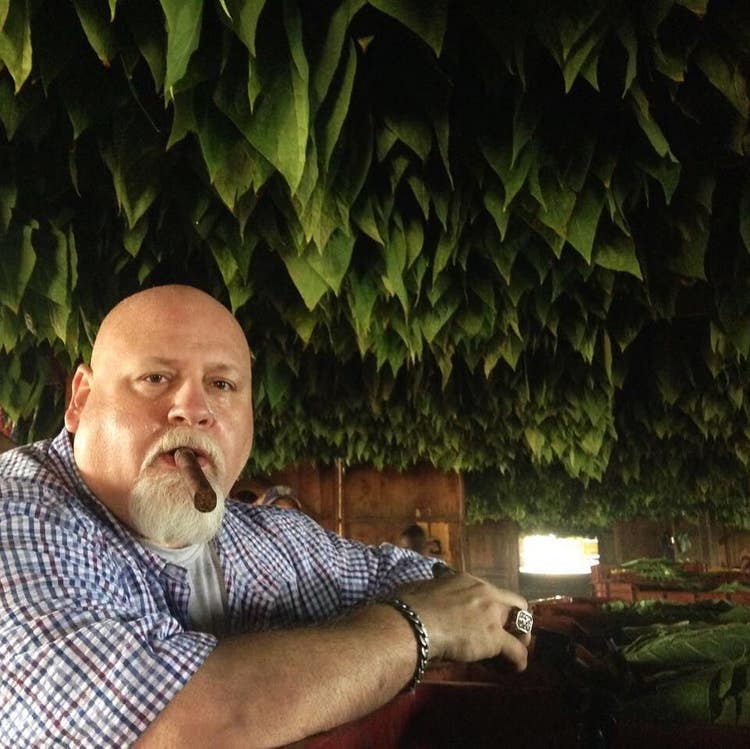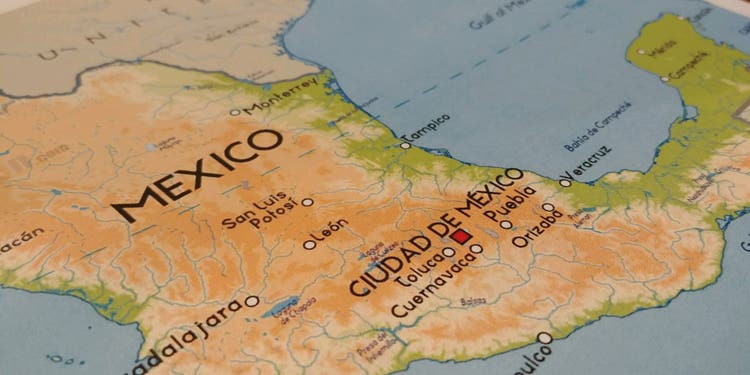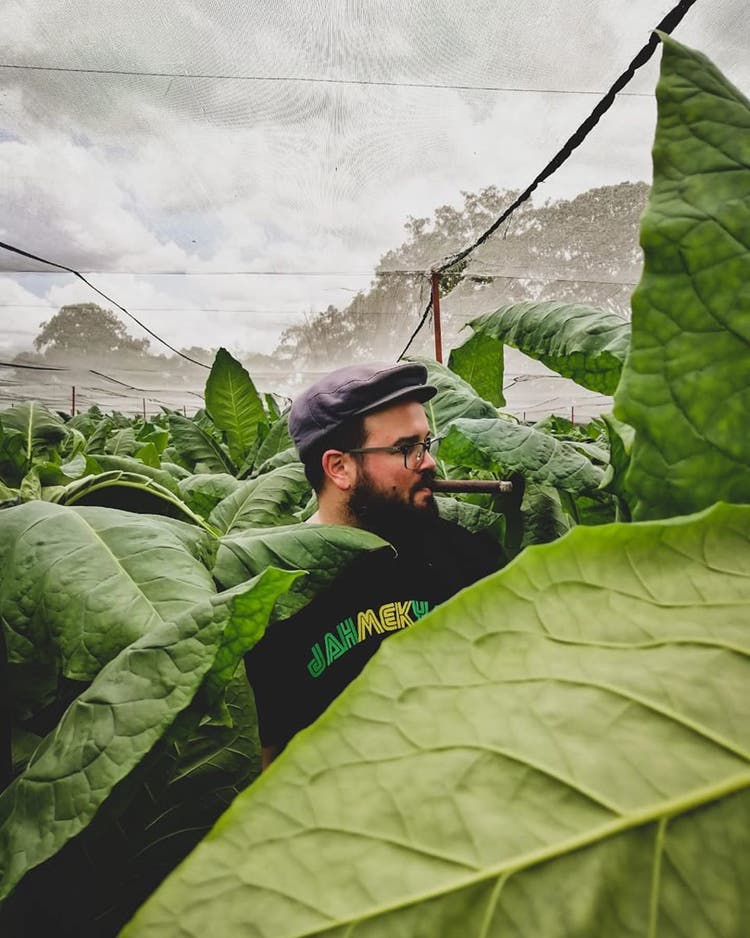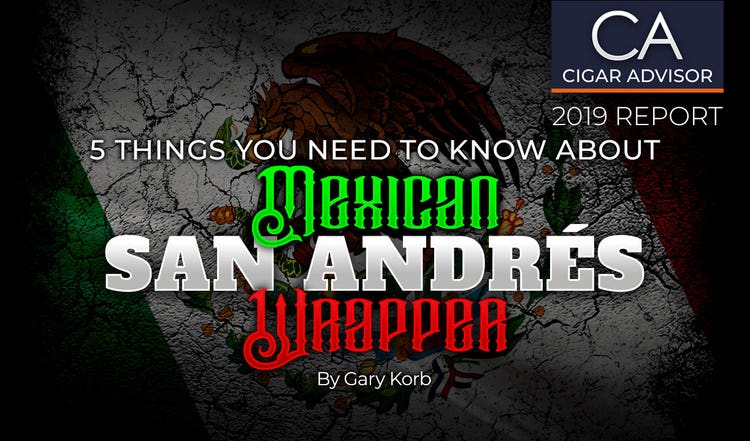
5 Things You Need to Know About… Mexican San Andres Wrapper
Somewhere in the vicinity of five years ago, I fell in love with a delightfully sweet, dark, and beautiful temptress from the San Andrés Valley of Mexico. It wasn’t a woman, however. It was the Mexican San Andrés Maduro wrapper leaf that surrounded my cigar – a Jericho Hill LBV. I’d never tasted anything so delectably sweet and spicy. About that time, the E.P. Carrillo La Historia El Senador had landed the #2 slot in Aficionado‘s Top 25 Cigars of 2014; another mind-blowing cigar with a Mexican San Andrés wrapper. So, from that point on, when I wanted a good Maduro cigar, I began seeking-out cigars rolled with this seductive wrapper.
Today, Mexican San Andrés Maduro – also referred to as “Morron” and “Negro,” for its dark brown color – is arguably as popular as Connecticut Broadleaf. Like Connecticut Broadleaf, it’s thick, naturally sweet, and most-often stalk cut prior to curing. But the terroir in which San Andrés tobacco is grown is markedly different from the Connecticut River Valley, and that makes the flavor of San Andrés Maduro quite different, as well.
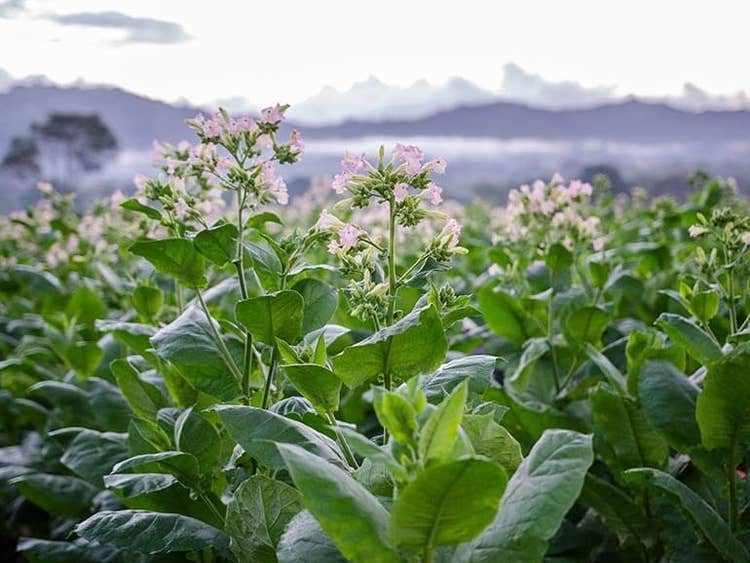
Located in Veracruz, Mexico’s San Andrés Valley rises 4,000 feet along the Gulf of Mexico in the southeastern section of the country. Its naturally cooler climate, abundance of fresh running water, humid breezes off the Gulf coast, and its volcano-enriched soil, make the Valley one of the best places on Earth for growing cigar tobacco. The result is a thick and elastic leaf that is often used for both binder and wrapper. Yet, because it can withstand the higher fermentation temperatures, it also makes a marvelous Maduro wrapper.
San Andrés wrapper has been used on premium cigars for many years, yet, these days it seems as if every new Maduro cigar released is draped in it. Obviously, there’s something to this savory leaf, so, let’s take a closer look. . .

Mexican San Andrés Tobacco is Grown Almost Exclusively By One Family
Based in the city of Tuxtla, Mexico, the A. Turrent family is the biggest grower of cigar tobacco in Mexico. The family dates back six generations to 1880 when Alberto Turrent I emigrated to the San Andrés Valley from Cuba. While Cuba remained the leading exporter of premium handmade cigars, the Turrent family was building an empire.
A. Turrent’s first significant breakthrough came in the 1960s from its U.S. sales of Te-Amo cigars, – a result of the U.S. embargo with Cuba. The cigars were cheap and mellow, but well-made and flavorful. Their most successful market was New York City, and during the 1970s, Te-Amo even became known as “the cab driver’s cigar.”
But as premium cigars from the Dominican Republic became more popular, demand grew and Mexican cigars became looked upon as inferior among the cigar cognoscente. Ironically, Turrent grown tobacco was being used in such highly-regarded cigars as Macanudo, Partagas, and Montecristo, mostly as a binder.
With the success of Te-Amo, the company was able to grow their bottom line and much more tobacco. Moreover, they had something that would one day prove to be one of the best Maduro tobaccos to grace the face of many of the world’s most prestigious premium cigars. It was just a matter of time. Take that cognoscente!
Today A. Turrent boasts over 2,000 acres of farmland where they have been growing San Andrés Negro (a.k.a. San Andrés Criollo) for generations. Genetically, the indigenous seed is very similar to Cuban seed, and even Cuban seed San Andrés tobacco has flourished on their farms. For example, the Montecristo Platinum uses a Mexican San Andrés Cubano wrapper, which is spicier in character.
By applying the most up-to-date agricultural processes, as well as new ways to cure, ferment and age it, the San Andrés Negro leaf has improved significantly in yield, texture, and flavor.
Certainly, cigar consumers have responded to the flavor of San Andrés Maduro. So, with A. Turrent having raised the bar for stellar Maduro wrapper leaf, it’s no surprise that more blenders are using Mexican San Andrés Maduro on their cigars these days.

San Andres Predates Cuban Seed Tobacco
Wild tobacco, indigenous to the San Andrés region, goes back to the days of the Mayans. Archeologists have found ancient stone monuments depicting carvings of Mayan priests and gods smoking long tubes of tobacco emphasized by clouds of smoke. To the Mayans, tobacco was a gift from the gods, and its cultivation eventually spread through the Yucatan peninsula and as far as Honduras.
Such was the case with the indigenous tobacco that grew in the Andes Mountains of Ecuador and Peru. According to an article on black tobacco written many years ago by Steve Saka of Dunbarton Tobacco & Trust in Cigar magazine (no longer in publication): “Of the 66 identified strains of tobacco, only two are smokable and these originated in the Ecuadorian and Peruvian Andes. Over the millennia, [indigeous tribes] spread the seeds north as they migrated to Central America and the Caribbean. Then Columbus was introduced to them in 1492 and tobacco found its way to Europe and beyond.”
Saka added that among the primary strains of black tobacco used for cigars include Bahia from Brazil, “a direct descendant of the original Andean plant,” and San Andrés Negro, “grown in Mexico since Aztec times,” as well as the Mayans noted above.
Moreover, a 2018 smallbatchcigar.com article on San Andrés tobacco with Nick Melillo (Foundation Cigar Co.) states: “Nick points out that Mexican San Andres Negro tobacco seeds pre-date Cuban-seed, spreading up from Peru into Central America, into Mexico, and then into the Caribbean.”

It Wasn’t Always Available for Use on Cigars Outside of Mexico
Due to protectionist tariffs, it was too expensive for Mexico to import tobacco from countries like the Dominican Republic, Nicaragua, Honduras, et al. The additional cost and miles of red tape required by the Department of Agriculture was just too complicated. Moreover, it could take up to six months to comply with the Department’s requirements. Therefore, many Mexican cigar makers had no alternative but to make cigars consisting entirely of Mexican-grown leaf, a.k.a. puros.
Relief came in the mid-1990s, when NAFTA was signed and the exorbitant tariffs were removed. Now Mexico could import and export their tobacco. Yet, even though the import/export restrictions were eased, allowing Mexico to export San Andrés tobacco for use on cigars made outside the country, Mexico still had to jump through several hoops to import tobacco for use in their own cigars.

Nicaragua Made Mexican San Andrés Tobacco Even Better
Now that Mexico was free to export their San Andrés leaf, demand was high from factories in Nicaragua and elsewhere, but the local farmers didn’t understand the machinations of the global economy.
In 2005, Nick Melillo went to Mexico to source San Andrés for his Melillo International company. He offered to act as a consulting agency for the farmers to help them distribute their tobacco to other countries around the world. – but he would do it from Nicaragua.
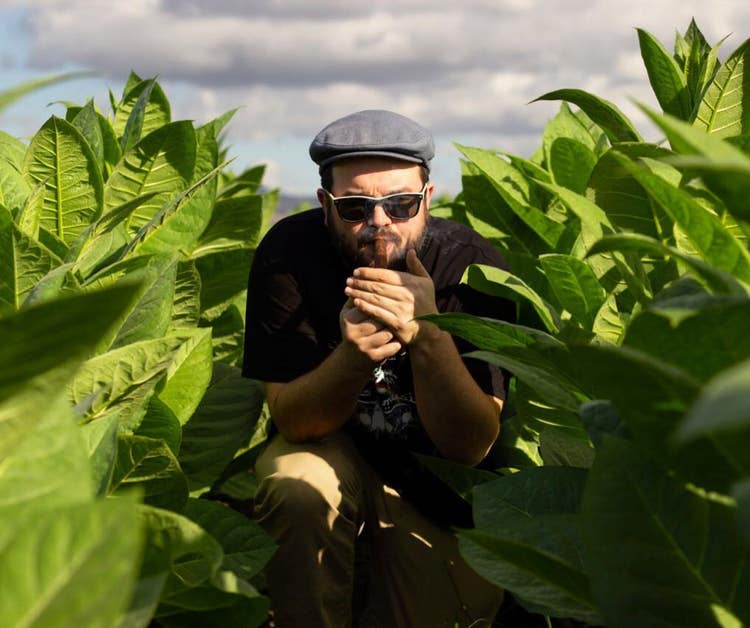
Nick’s relationship with Oliva Tobacco Co. allowed many Mexican farmers expand their operations, thanks to help from Oliva’s sorting facility in Estelí. Until then, Mexican San Andrés tobacco was missing from Oliva’s inventory. But Nick went one step beyond.
Nick brought the Mexican farmers to Nicaragua to see how they were growing, fermenting, priming, and sorting the tobacco in Estelí. Alternately, he sent Nicaraguan growers to Mexico to help them improve their growing and curing process. This move made Mexican San Andrés more accessible, improved the quality of the leaf, and most importantly, changed how the San Andrés tobacco was fermented.
Nick noticed that the Mexicans were fermenting their tobacco in very large pilons. These piles contained 10,000 to 12,000 pounds of tobacco. That kind of weight was much heavier than that used in Nicaragua. The result was much more heat, which fermented the leaves much faster. It’s also a testament to the amount of heat San Andrés tobacco can handle.
However, when the tobacco was brought to Oliva Tobacco Co’s. operation in Estelí, they built lighter pilons which resulted in lower heat and an extended fermentation time. The results were dramatic. Lowering the heat and fermenting the tobaccos longer allowed the tobacco to preserve more if its natural oils, thereby, giving the tobacco more flavor.

How Mexican San Andres Tobacco Tastes
One of the most important things blenders must understand is how a certain wrapper balances with the filler and binders they plan on using for a given cigar. You can’t use San Andrés with just any filler. The leaf seems to work best in bolder blends rather than blends with lighter tobaccos.
As to its flavor, it’s been described as rich, earthy and chocolaty with coffee notes, an undercurrent of spice, and very smooth on the palate. Of course, like most tobaccos, San Andrés comes in many different shades. For example the lighter colored San Andrés leaf like the San Andrés Cubano has more of a peppery spice and less sweetness than the Maduro variety.
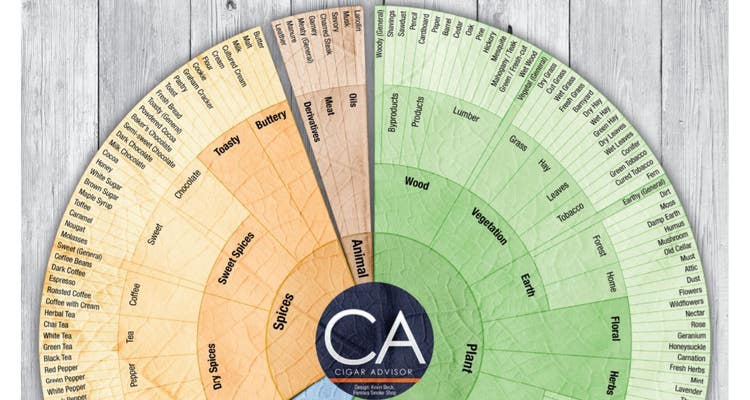
With regard to the more familiar dark San Andrés Maduro variety, subtle notes found in the leaf have been described as damp earth, wood, clay, and a toasty nuttiness. For the most part, San Andrés Maduro could be most simply described as sweet and spicy. Some aficionados have even compared the taste to Cuban Maduro cigars.
For cigar smokers who love the extra sweetness that comes from Maduros like stalk cut and cured Connecticut Broadleaf, San Andrés Maduro is a must-try. Of course, not all San Andrés is consistent in flavor across all premium cigars. Like any other cigar it depends on how the tobacco was cured, and the filler and binder used. I suggest trying several brands, particularly the boutique varieties like those from Foundation Cigar, Aganorsa, and Asylum, Plasencia, and Illusione to name a handful. Eventually, you’ll find the San Andrés blend that’s right for you.
If you liked this article, please share it or add your opinion with a comment.

